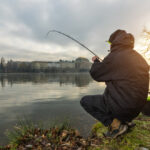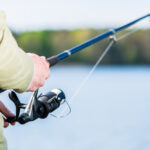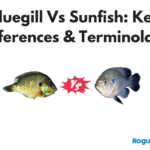If you’re a keen angler or just interested in aquatic species, it is interesting to know the differences between spotted bass and largemouth bass. Knowing these contrasting variations between the two will make you more knowledgeable, help you distinguish one from the other, and build your experience if you are an angler.
It is important to understand how both species behave as well as their differing characteristics. Knowing these differences will be very useful and helpful going forward in the bass fishing game. It will allow you to adjust your approach to fishing bass resulting in a better catch rate in particular waters.
There are several differences between spotted bass and largemouth bass, from their jaw lengths and stomach markers to their cheek scale size and tongue patches. Of course, these differences aren’t as straightforward to see to untrained eyes, so separating one from the other can be a difficult task.
That is where we step in. To show you the differences between spotted bass and largemouth bass once and for all, we will delve into both species to help you distinguish their appearance, behavior, habitat, and more so you can tell them apart easily from now on.
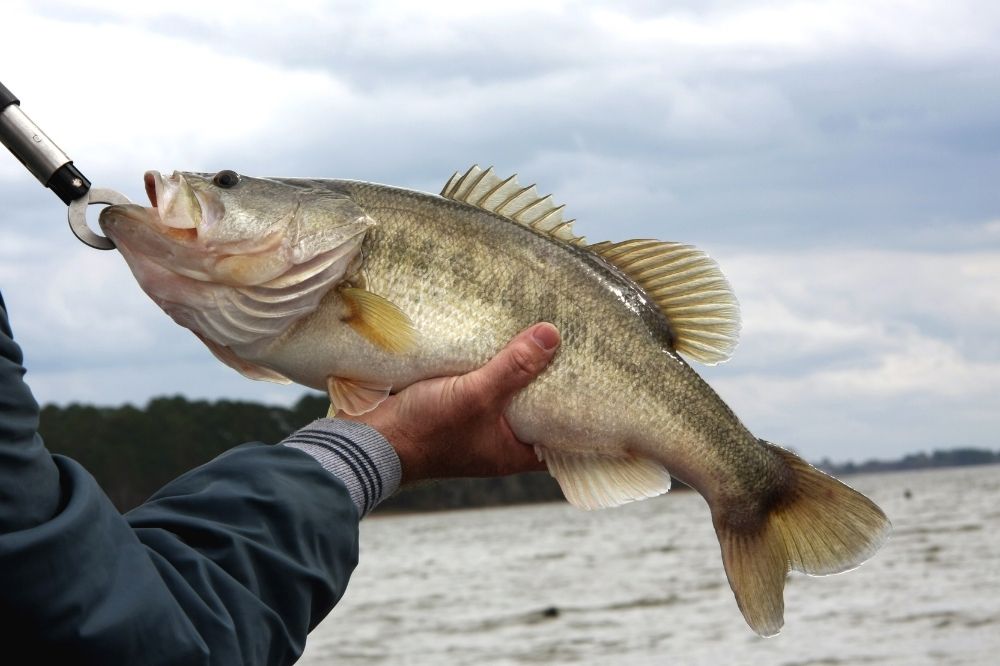
Appearance
It can be tricky to separate spotted bass and largemouth bass from each other, but it becomes a lot easier once you know what to look for.
It is not possible to identify both fish by their coloration, stripes, or spots alone, as these can change drastically in different water habitats.
Below are a few identifiable features to help you know exactly which fish you have caught next time.
Spotted Bass Appearance
When you first look at spotted bass and largemouth bass, they are eerily similar in appearance. However, the spotted bass lacks a division in its dorsal fin and has a continuous whole fin. The base of its dorsal fin has scales that are typically smaller in size than the largemouth bass.
One key difference between these fish is the jaw length. Many experienced anglers can tell the difference straight away by noticing the location of the jawline when in relation to the eye. The spotted bass’ upper jaw is shorter than the largemouth bass as it doesn’t extend out past the rear of their eyes.
Spotted bass also sports a rectangular tooth patch located on their tongue. Anglers can feel this with their thumb or finger to differentiate both fish. The texture of the tongue is a key difference as it is very hard to see this tooth patch on with the naked eye.
Spotted bass are also known by other names. We don’t mean Keith or Mike (although feel free to call them this). The spotted bass is commonly referred to as Kentucky because of its dominant population size in this state.
The scales on the cheek tend to be smaller on spotted bass than largemouth bass. The rest of the body has spots, especially along their stomach hence the name they were given.
Largemouth Bass Appearance
Also referred to as bigmouth, green trout, black bass, and lineside, largemouth bass are a focus of many big fishing tournaments. These are popular with many anglers because of the large size they can grow to and their large numbers across the waters of America and other countries.
Unlike spotted bass, largemouth bass is the top predator in their ecosystems. Reaching up to 16-inches in size during the third year of growth, there aren’t many fish that will argue with them.
In their first year of life, largemouth bass only measures around 4 to 6-inches, but their significant growth is due to becoming the number one predator as soon as they reach 2 -inches in length. They are then able to feast on large amounts of prey, increasing their size.
Before they take over their waters, a largemouth bass’ diet will typically consist of insect eggs, larvae, and zooplankton.
The largemouth bass is green in color and easily identifiable by their dark bars and blotches that form a horizontal stripe down the middle of their body. When you look at the underside of a largemouth, this coloring tends to be paler, consisting of light greens to white. However, this varies across each specimen.
One way to easily distinguish the largemouth from the spotted bass is by its fins. Unlike the spotted bass, which has one continuous dorsal fin, the largemouth bass’ fin is located on its spine or back. The dorsal fin is divided, forming anterior (nearer the front) and posterior (further back) sections.
The posterior section generally has around 12 to 13 soft rays compared to the anterior’s nine.
Finally, the cheek scales of largemouth bass are always the same size as the rest of their scales as opposed to the spotted bass.
Although some of these differences are quite plain to see, identifying a spotted bass from a largemouth bass remains difficult. Most of the time, even the most experienced anglers have to take one out of the water just to have an idea of what kind of bass they are dealing with.
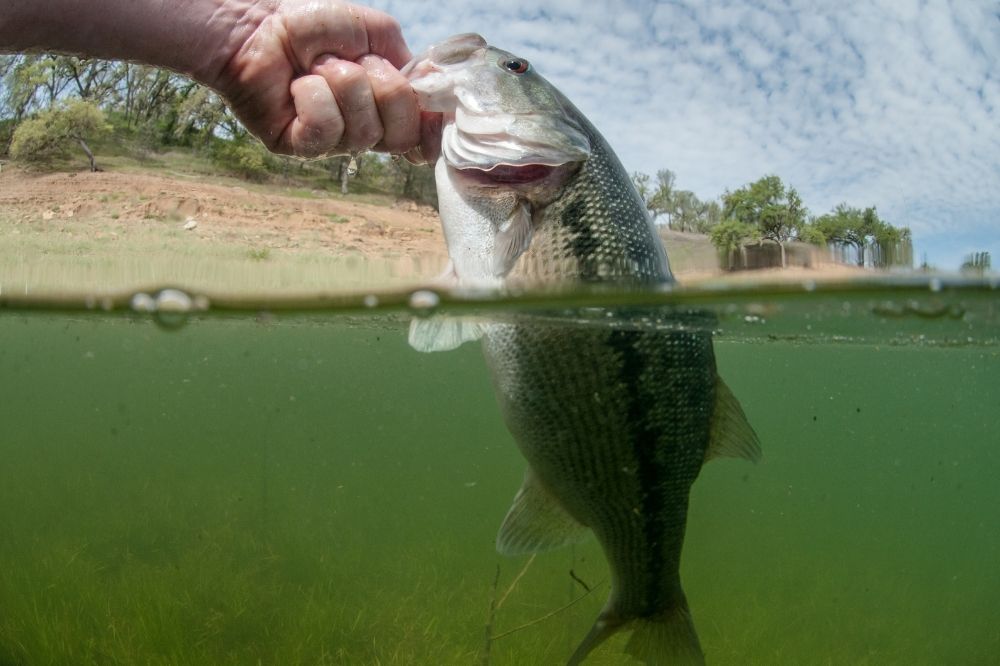
Behavior and Characteristics
Ask any angler who has experience in bass fishing, and they’ll probably tell you that the most fun part is dealing with the bass’ behavior.
You get to deal with strong fish that fight hard when taking the bait during the spawning season, as well as the more timid specimens that lurk in the wintry waters. Understanding the behavior of these fish will help your catch rate improve in the future.
Behavior is a key clue when trying to differentiate between spotted bass and largemouth bass. Both respond uniquely to a cast, the retrieval, and the design of a rig. Knowing these behaviors will allow you to fine-tune your fishing game and strategy to know which type of bass you are dealing with.
Spotted Bass Behavior
Spotted bass tends to school up with other fish in one area of water. If you are unsure when you have come into contact with a school of fish, it is easy to find out. Simply cast in one specific area repeatedly, and if you attract bite after bite, the school should soon be uncovered.
If your lure is taken more sporadically over a larger body of water, it is more likely that there is a largemouth bass in that vicinity.
Largemouth Bass Behavior
Because of their larger size, largemouth bass tends to be slower than spotted bass. This is especially evident when it comes to stalking and hunting prey. The largemouth is far more powerful than their spotted counterparts, but it is very unlikely to see one move out quickly or chase a spinning lure.
Largemouth bass seems to prefer cooler temperatures, too, as they tend to sit deep in colder water areas when temperatures rise. It is thought that they do this to conserve energy.
Once you have hooked a bass, it is very helpful to know what you are fighting against. One way of being able to tell is the largemouth’s habit of rushing to the surface of the water before jumping and rushing around. Spotted bass usually dives deeper and finds refuge in underwater objects or around obstacles until the threat has diminished.
Location and Habitat
Spotted bass and largemouth bass are typically found in central and eastern areas of the United States. Having these fish in the same areas can be a thrilling experience for any angler but also difficult to discern which one you are dealing with.
Fortunately, with a little bit of knowledge, you should be able to distinguish both fish from one another depending on the area in which you fish on a body of water and, on occasions, the region where you fish.
Spotted Bass Habitat
The spotted bass is usually found in slow-moving water areas such as streams or small rivers. On rare occasions, you will find them swimming in lakes, but they generally prefer cooler water to warmer, larger areas of water.
Most spotted bass are native to the Mississippi river basin and the Gulf states. You will find them frequenting the waters of Texas and Florida very often and more in mid-Atlantic states such as Virginia and North Carolina. They are not only found in the USA as there are large populations in areas of South Africa.
Although they like free-flowing rivers and streams, you will also find spotted bass in areas with underwater vegetation and obstacles where it is easy to hide from predators.
Largemouth Bass Habitat
The largemouth bass is often found in waters that contain submerged logs, long grasses, or other obstacles. Unlike spotted bass, largemouths prefer calmer and stiller waters such as lakes instead of flowing streams and rivers.
When it comes to different regions and countries, the largemouth bass is found throughout the US. Canada and Mexico also have large populations where anglers take delight in fishing them.
Introduction schemes have seen rapid growth in numbers of largemouth bass in other parts of the world, too, such as Japan and Europe, where bass angling is becoming more and more popular every year.
Subspecies
As with many species of fish, spotted bass and largemouth bass have some subspecies. Both have evolved due to different environments and ecosystems, with every subspecies having slightly different behaviors and physical characteristics.
Spotted Bass Subspecies
These subspecies have evolved mainly because of the different features within the water they live in. It is hard to tell these subspecies apart as all spotted bass are resilient when coming up against various conditions. This is why they have adapted to inhabit these areas and thrive.
Largemouth Bass Subspecies
Largemouth subspecies are a little easier to distinguish. One of the most popular states for bass fishing is Texas and you will find two subspecies here. One is the Florida Largemouth. This subspecies was born out of initiatives to introduce more bass to certain areas by bass angling communities, businesses, and clubs within the state.
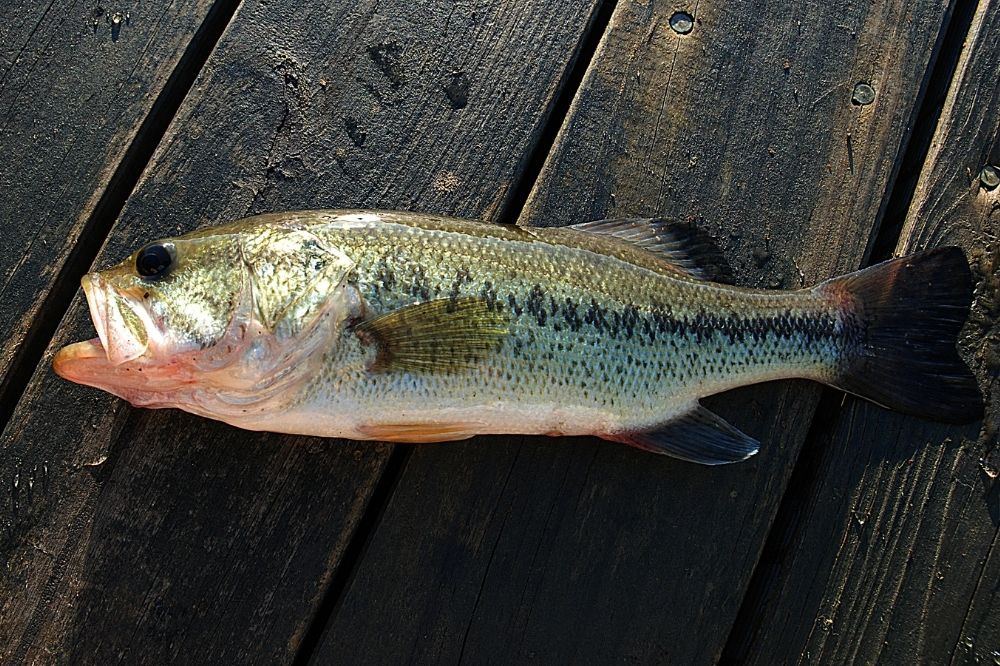
Baits and Lures for Spotted Bass and Largemouth Bass
If you decide to hit the waters to try and catch a spotted bass or largemouth bass, you should consider which baits and lures are best.
A variety of lures attracts both species of fish because of their varied diets. However, these diets are pretty similar, so they should go for the same kinds of lures.
Soft plastic worms and jigs, spinnerbaits, minnow, and crayfish imitation lures are generally useful lure types to catch these bass fish and have been successful with many anglers for years.
Fortunately, catching these fish is a lot easier than trying to tell them apart. Using the above baits and lures should give you some success in catching a bass. It’s just up to you to decide whether it’s spotted bass or a largemouth bass afterward.
Best Season to Fish Spotted Bass and Largemouth Bass
Finding the key differences between spotted bass and largemouth bass can be easier depending on the season in which you’re fishing.
Spotted bass spawns in late May and early June, but this can change with certain latitudes. This means that fishing for spotted bass is best around the early summer months, especially if you want to get a good haul in.
Largemouth bass usually spawns in the spring, so fishing in April and May, depending on latitude, is advised for the best results. However, it can be a delicate subject. Many ecologists argue that anglers shouldn’t fish in spawning seasons as it can greatly affect the ecosystem. This is why many anglers who fish in these spawning periods tend to reel their catches in very slowly before unhooking the fish to let it back into the water quickly. This benefits the fish and the ecological system below the water.
If you want to fish outside of the spawning season, you should be able to get a good catch rate throughout the summer and into fall. Many fish species usually semi-hibernate during the winter months meaning the catch rates will be a lot lower.
Depending on the location, the best season to catch differs. Southern areas of the US generally warm up far earlier than northern areas resulting in a booming bass population in the southern states. In spring, you will have to depend on the weather as some water areas can warm up more than other parts.
The spawning season certainly sees the greatest numbers of bass in the waters, and it is far easier to catch a good amount then. This is probably because of the female’s hunger and heightened aggression in males who want to guard their territories.
During the summer months, it is recommended you try fishing in weed beds where both bass species like to stalk larger populations of fodder fish. Staying on these outer areas of the beds is the best way to attract both spotted bass and largemouth bass.
